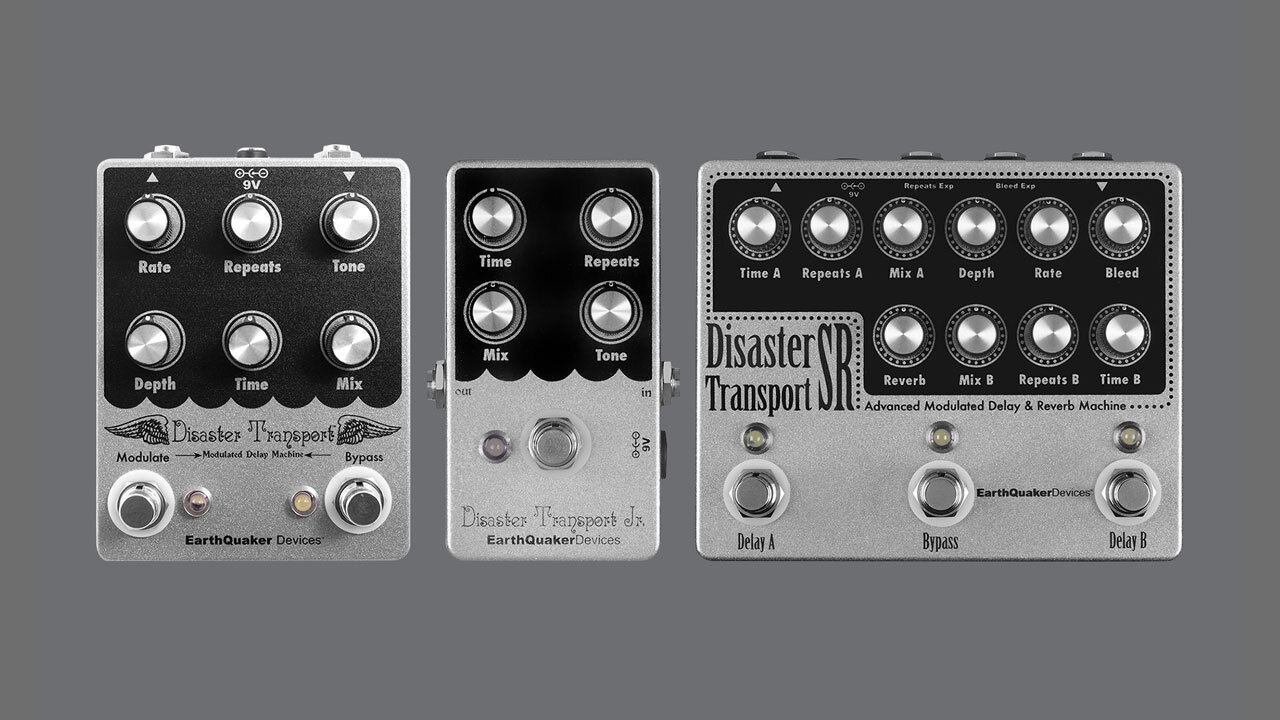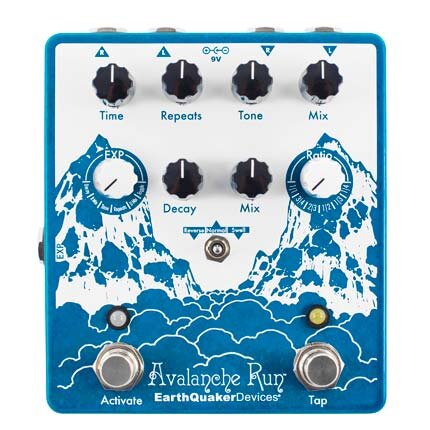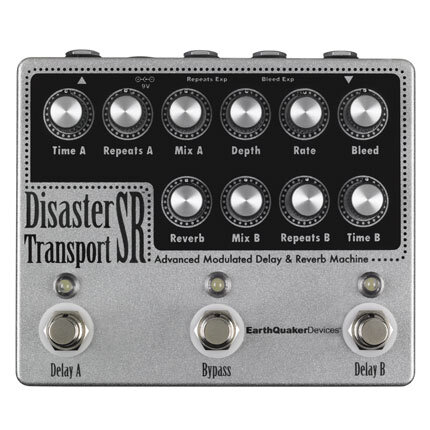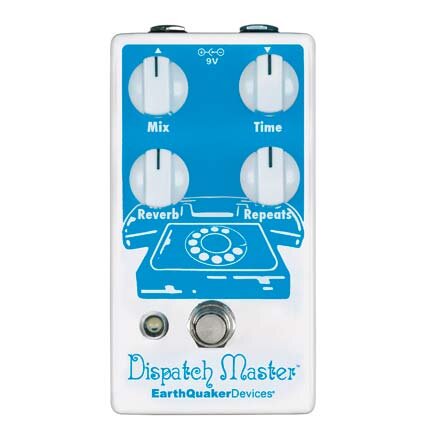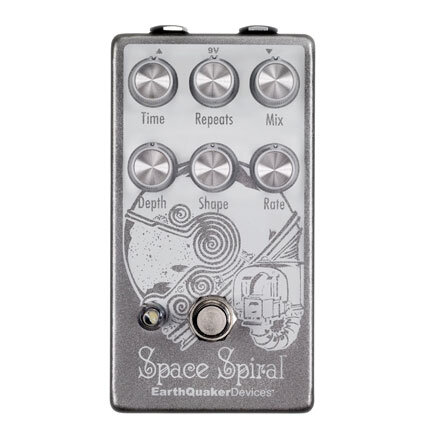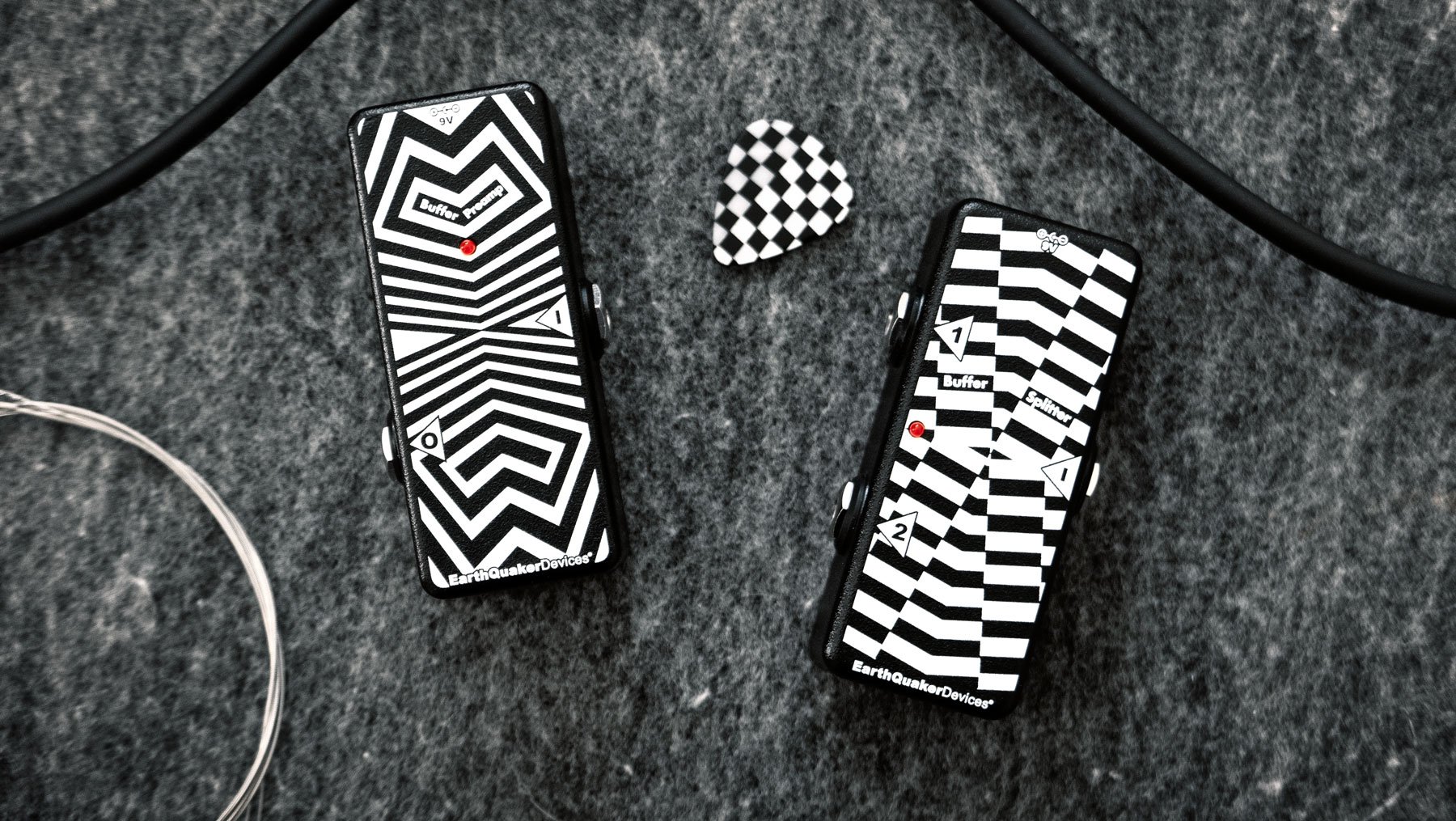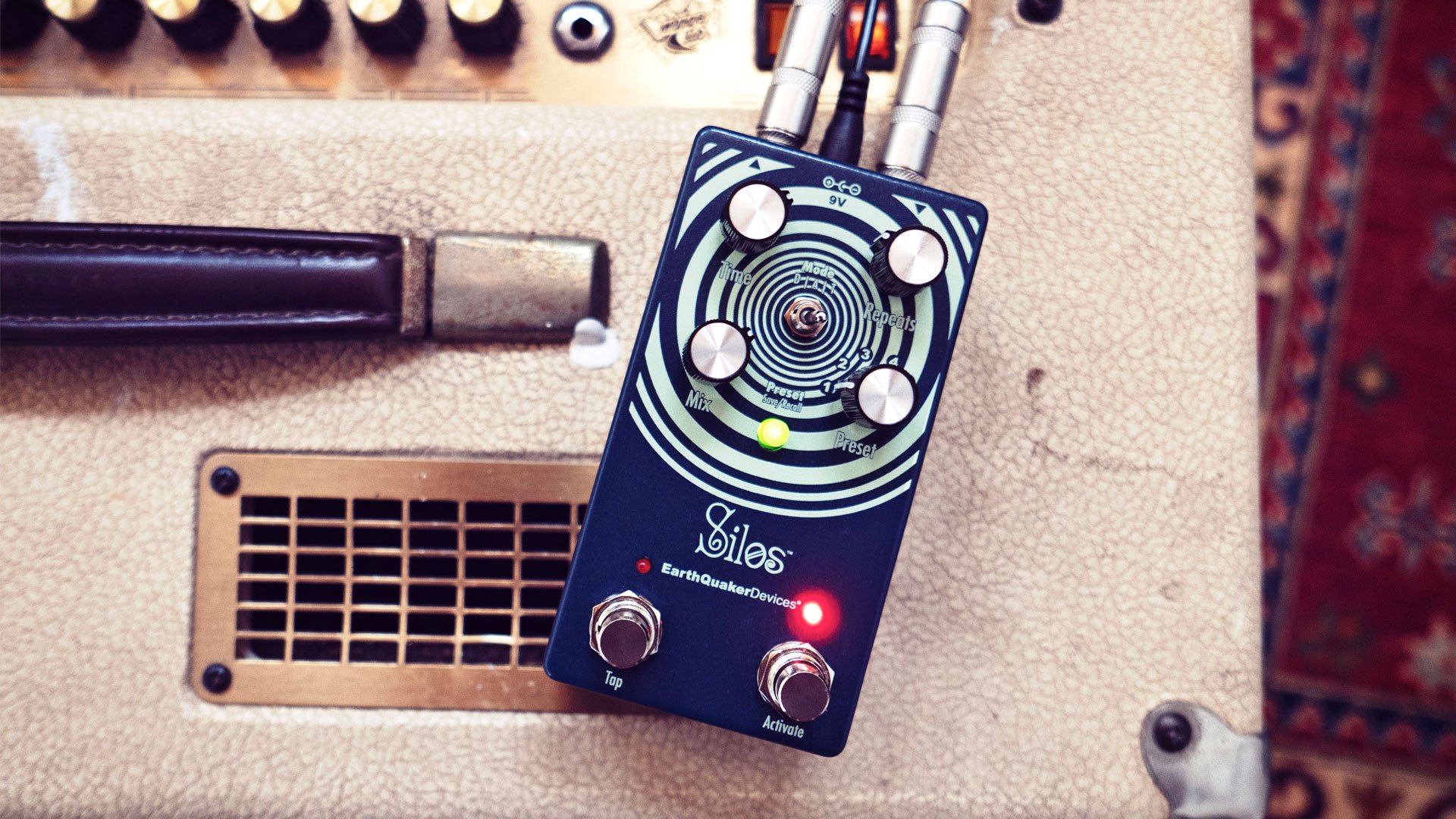Dead Pedal Office
Malcolm X Abram
On the day, June 1 in the year of our (your preferred deity here), 2021, EarthQuaker finally put an end to its long-running “family” of pedals.
Yes, the Disaster Transport SR has been sent to its final resting place on the Legacy Page to be reunited with the rest of its family. Longtime EQD fans will know that it signifies the end of an era for EarthQuaker Devices.
The Disaster Transport SR was originally introduced in 2013 following its smaller relatives the original Disaster Transport (2007 and a revised version in 2010) and, the cute little offspring, the Disaster Transport JR (2010) which all hold a special place in the history of EarthQuaker Devices.
“The Disaster Transport series is the only series [we’ve done]. There’s been a Disaster Transport of some sort or another in the line since EarthQuaker started,” said Jamie Stillman, EQD Lead Designer, President, guitarist and drummer.
That is, until now. The Disaster Transport SR was birthed as the deluxe, feature-packed version of the Disaster Transport and, by extension, the Super-Duper Deluxe version of the Disaster Transport JR.
But Stillman says despite its special status among the EQD line, the Disaster Transport SR just couldn’t keep up.
“The sales are low, it’s an extremely difficult pedal for us to build and it takes up a lot of production time,” Stillman said matter-of-factly.
“We’ve got a lot of other delays and reverbs in the line, and the Space Spiral is sort of in the same family as the Disaster Transport series, so it’s not completely obsolete. Even though there is nothing else in our line that does exactly what the Disaster Transport SR does, it has run its course and it’s time for it to be discontinued,” he said.
The Disaster Transport SR was EarthQuaker’s first truly big ass pedal and has managed to stick around even as the aforementioned newer delays with smaller pedalboard footprints including the popular Avalanche Run, Dispatch Master and the Space Spiral have gained significant popularity. Stillman said he’s been advocating for dropping the Disaster Transport SR from the line for a few years.
Back before the smaller Space Spiral, the Disaster Transport SR added modulation, reverb and most uniquely the expression pedal feature that allows control of the repeats or the bleed from Delay A into Delay B. The expression controls were a big factor in turning Jimmy Carbonetti, a luthier and guitarist for New York based band Caveman into a devotee of the Disaster Transport SR. Carbonetti discovered his love of vintage amps and guitars as a young man while working at Chelsea Guitars and later, 30th Street Guitars. Carbonetti said the Disaster Transport SR long ago earned a permanent spot on his home, studio and touring pedalboards along with other EQD pedals including the Night Wire, Dispatch Master and the discontinued Gray Channel.
Caveman guitarist Jimmy Carbonetti’s touring board featuring the recently discontinued Disaster Transport Sr. and other EarthQuaker Devices pedals.
“I’ve gone through everything. I’m down to a very small amount of stuff right now, but I’ve had everything. Every tape echo, I’ve had a couple of Binson Echorecs,” Carbonetti said, noting that with his old Boss Space Echo, he would use a Tone In Progress Third Hand, a volume-type pedal that musicians could attach to a specific pedal knob for control.
“After touring for a minute, that [Space Echo and Tone In Progress combo] was the worst. It broke all the time,” he said.
Carbonetti first met the original Disaster Transport during a gear emergency at a gig during New York’s CMJ music festival.
“I had to run to Ludlow Guitars to get a delay and I tried like 10 pedals, and the Disaster Transport won. It was like my Space Echo. I fell in love and I never turned it off from the day I got it,” he said.
Brooklyn band Caveman featuring proud Disaster Transport SR user Jimmy Carbonetti performing at Panorama.
When the Disaster Transport SR was released, Carbonetti fell in love all over again and finally ditched the delicate Space Echo/Third Hand twofer.
“The Senior came out and it had expression controls. I’ve never turned that one off ever since I got it, and that’s been Caveman’s sound. It’s very sad to see it go. It’s always on and my foot is always on the expression pedal. I’ve broken a bunch of those [foot pedals] now,” he said, chuckling. Besides the added versatility of expression control, Carbonetti said he likes the movement that the modulation, bleed and reverb add to the sound.
“I like how things move organically rather than a digital delay where it’s almost carbon copies. I like how it breaks up in the end and sounds very crazy which works well in my brain. It has a lot of personality and character,” he said. Proving his testimonial pudding, Carbonetti said the Disaster Transport SR’s spacey echo sounds can be heard on the band’s recently released 80s synthpop inspired single, “Helpless” and is used extensively on Caveman’s upcoming album, Smash, due out in July.
Capitalism vs. Creativity
So why kill a perfectly good, unique pedal that is beloved by so many?
Bizness.
“There are a few reasons why a pedal gets discontinued,” Stillman said.
“The primary reason is something new is going to take its place. Something I feel like fits the same bill or fills the same space in the line, but I think is better.”
“Sales related would be number two, like if it’s run its course and sales have really slowed down, obviously. The third reason is a parts becoming obsolete and I can’t find suitable replacements. Something like the Disaster Transport SR is a different case because it ran its course years ago, but it was so unique that we just kept it around,” Stillman said. He also mentioned the Interstellar Orbiter, an unusual dual resonant filter pedal designed specifically for turntablist Kid Koala as another pedal that got to hang around after its sales suggested otherwise.
“That was totally not made for guitars, it was made for turntables and I thought it was cool so we decided to keep selling it because Kid Koala wanted to sell them at his shows. But it was big, and people never really wrapped their heads around it. It did this one special thing and it wasn’t a thing people used all the time,” Stillman said.
The push-pull of keeping a pedal that as a designer you know is pretty damn cool versus the harsh realities of the pedal buying market is certainly not unique to EQD.
Josh Scott founder/lead designer of JHS Pedals.
Josh Scott, founder and lead designer of JHS Pedals, and YouTube star, co-creator and co-star of “Guitar Pedals: The Musical,” echoed Stillman’s points and added one of his own.
“Sometimes, it’s funny, I’ll design a circuit and I brand something before I ever make the circuit which is backwards for a lot of people. Jamie makes fun of me for that,” Scott said.
“By the time it comes out, it’s two years later and so there’s this feeling [that] I forgot about a product. Then, the product comes back up and it’s either a home run or it kind of sticks around. But I’m always wanting to create and we just simply can’t have 1000 SKU’s, so sometimes I just look at a pedal and think, “I just need to kill this distortion because I want to do this other thing that’s really fun to me right now,” he said.
Sometimes an older pedal is simply replaced by a similar but better pedal. For example, the popular Plumes overdrive is essentially a replacement for the discontinued Dunes. One of Stillman’s personal favorites was put down for similar reasons.
“The Transmisser was a big one. That pedal was discontinued because we had more reverbs coming, but I thought that pedal was so cool. I still really like it, but it also kind of ran its course. People didn’t seem to understand it,” he said.
Gone But Not Forgotten
For now, the Disaster Transport SR is the only pedal ceasing active production, though there will be plenty available on Reverb or other online gear flea markets (Oh no! The average price for a used one just doubled as you were reading this! Sorry.)
But fear not, pedal people, just because your personal favorite pedal may be on the legacy page doesn’t mean there’s absolutely NO chance for a return to the production line.
Perusing the EQD Legacy page, Stillman still says he’s proud of those pedals and there are even a few he’d like to consider revisiting in the future.
“I like all the pedals that are on the legacy page. There are pedals that I keep thinking I want to do something with again. The Speaker Cranker is one, the Zap Machine is another. I really like the Monarch for bass. I thought the Pitch Bay was cool, I would like to use that. The Pitch Bay got discontinued with the intention of making something similar but better in its place and we just haven’t gotten there yet,” Stillman said.
Malcolm X Abram is a recovering reporter and music writer and a proud 40 year guitar noodler. He lives, works and plays in the bucolic dreamland of Akron, Ohio in an old house with two dogs who don’t really like each other and way too many spiders.
